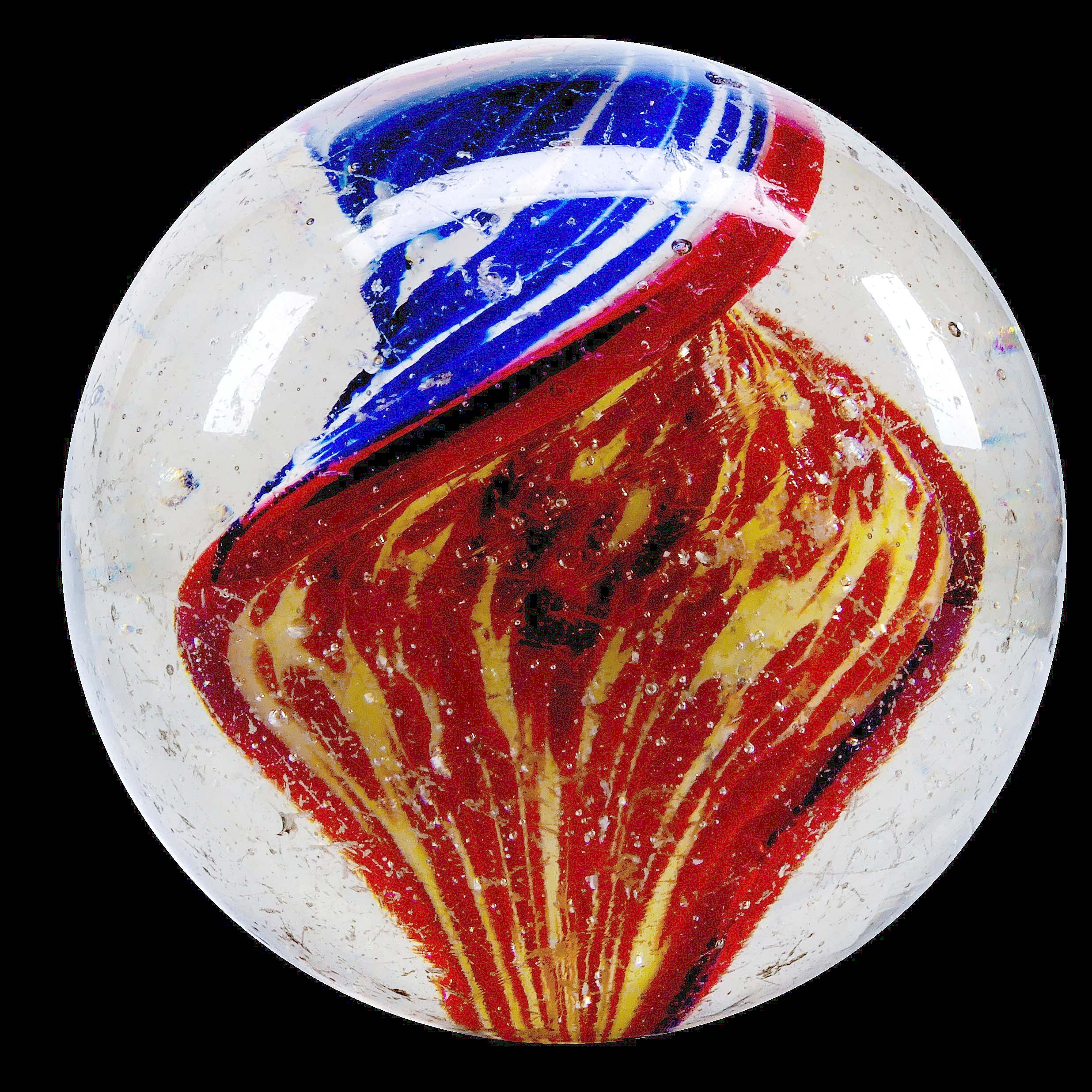
Handmade Single Ribbon Onionskin with Mica by End of Day, Germany, circa 1860-1920, 2¼ inches, near mint(+) (8.7), achieved $19,200.
TRUMBULL, CONN. — Block’s Marble Auctions has been auctioning marbles since 1989. The firm’s 1,149th sale was conducted on October 21 and resulted in a new auction house record for a single marble. The marble, a handmade Single Ribbon Onionskin with Mica by End of Day, achieved $19,200 with buyer premium against an estimate of $4,5/9,000. While not mint (grading at an 8.7/10), the marble was uncharacteristically large (2¼ inches in diameter) and well-made with superior symmetry.
It was handmade in the Lauscha region of Germany between 1860 and 1920. Absentee and live bidding was brisk, with nine bidders throwing their hat in above the estimate. Ultimately it was a battle between two bidders, with the marble being knocked down to an overseas bidder.
The second highest lot of the auction was a very rare original box of 25 Akro Agate Company Cardinal Red marbles in size No. 4. This was a boxed set of 7/8-inch red slag marbles produced in Clarksburg, W.Va., between 1925 and 1932. Machine made marbles were sized in 1/16-inch increments from No. 00 (9/16-inch) to No. 6 (1 inch).
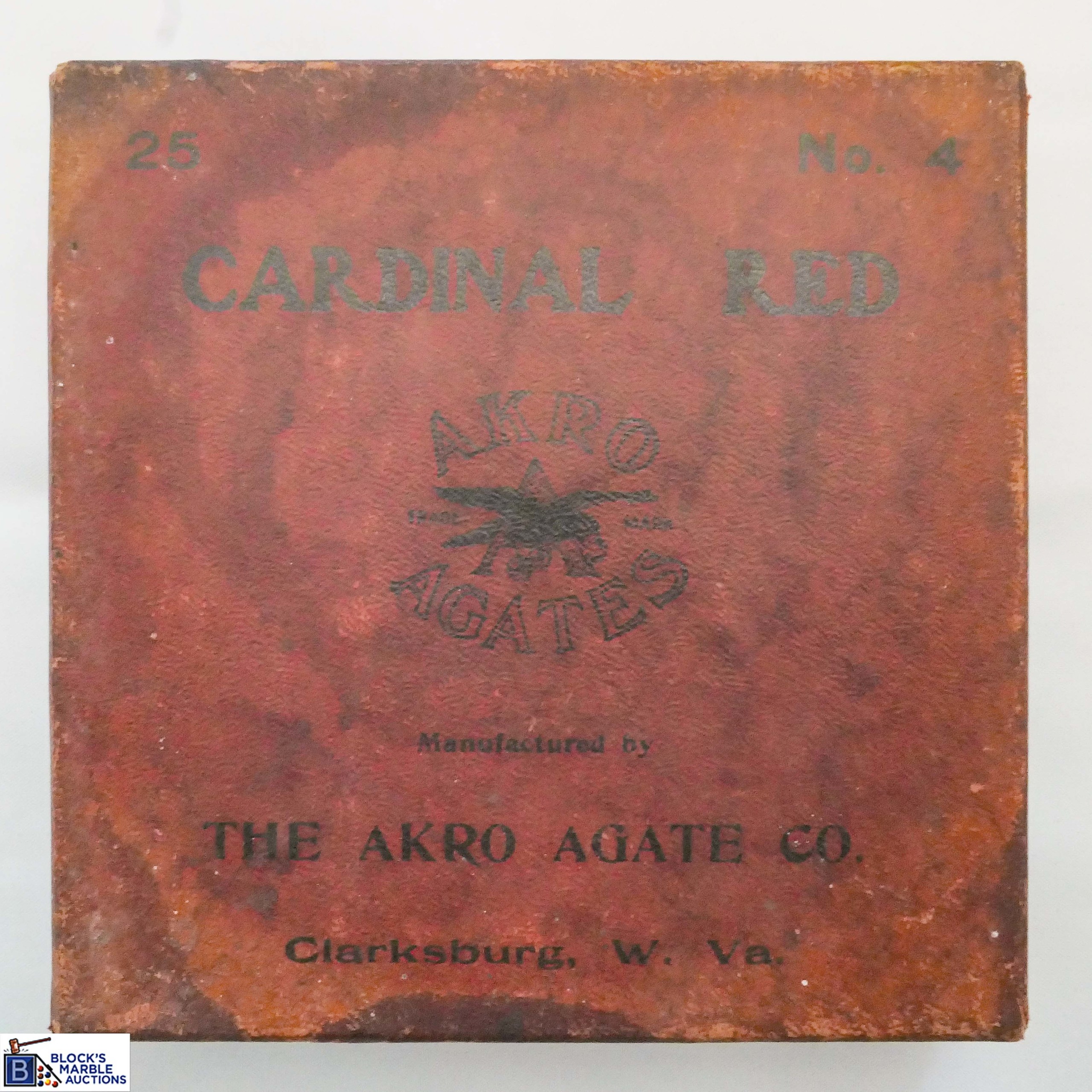
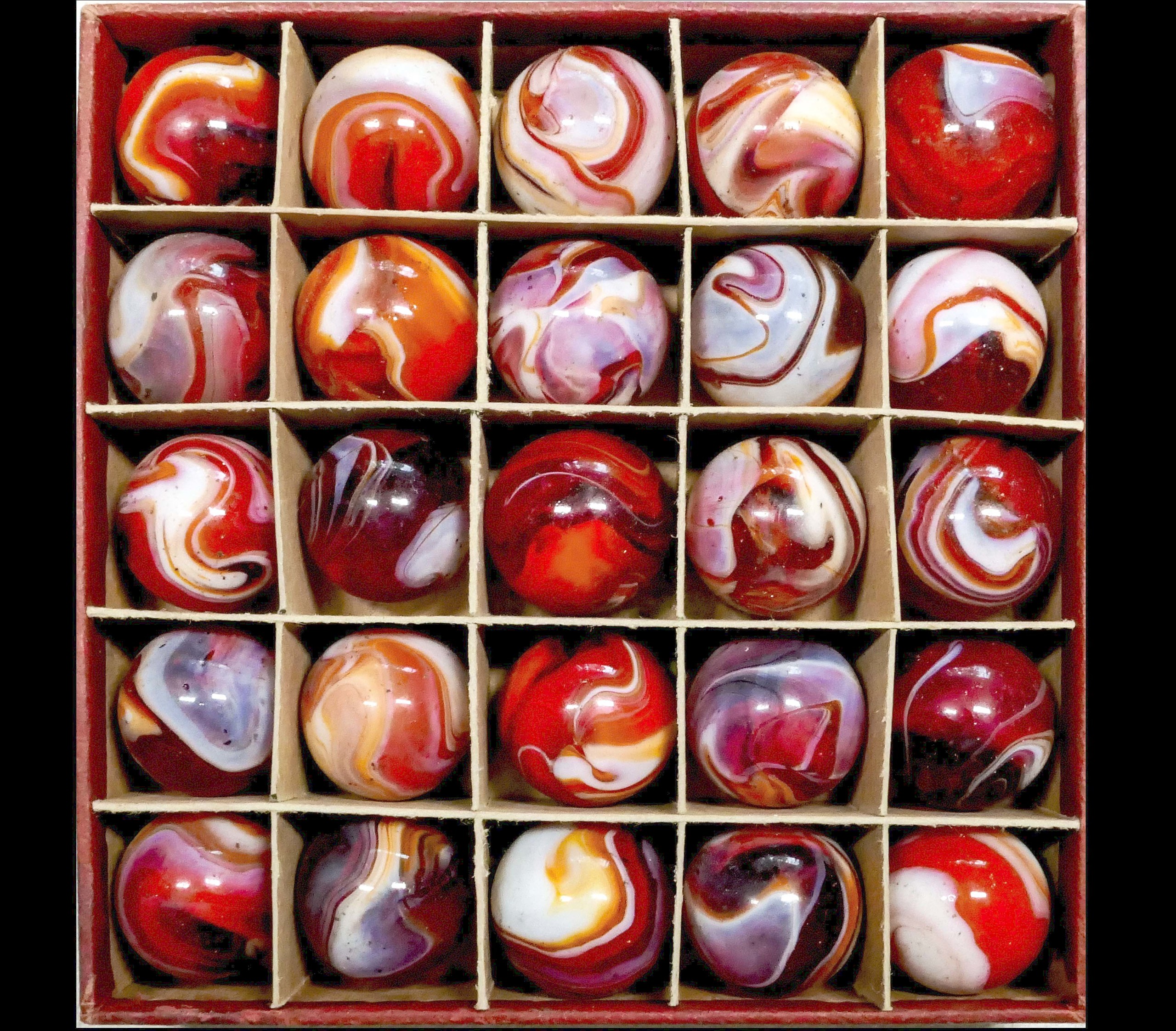
Rare original box of 25 Akro Agate Company Cardinal Red 7/8-inch slag marbles in size No. 4 produced in Clarksburg, W.Va., circa 1925-32. This was a boxed set of red slag marbles flew to $2,603.
The most common marbles were Size No. 1 (5/8-inch) since this was the size that was put in the ring to shoot at. The shooter was usually Size No. 2 or 3. It is rare to find an original box of Size No. 4 marbles, because these were generally too large to hold effectively as a shooter. This particular example was original and mint, carrying an estimate of $1/2,000. It was knocked down at $2,603.
A contemporary artist handmade marble came in as the fourth highest lot of the auction. This was the Snow Leopard from the Mark Matthews “Animal Spheres” series. Mark Matthews is a glass artist with a studio in Ohio. He produced a series of spheres, most too large to be called marbles, that replicate the pelts of 19 different animals and called it the “Animal Spheres” series. The volume of each sphere in this series relates directly to the weight of each species ranging from 1.53 inches in diameter for an Ocelot to 6.03 inches in diameter for a Reticulated Giraffe. The Snow Leopard, at 2.28 inches and signed “Matthews 1999,” achieved $1,715.
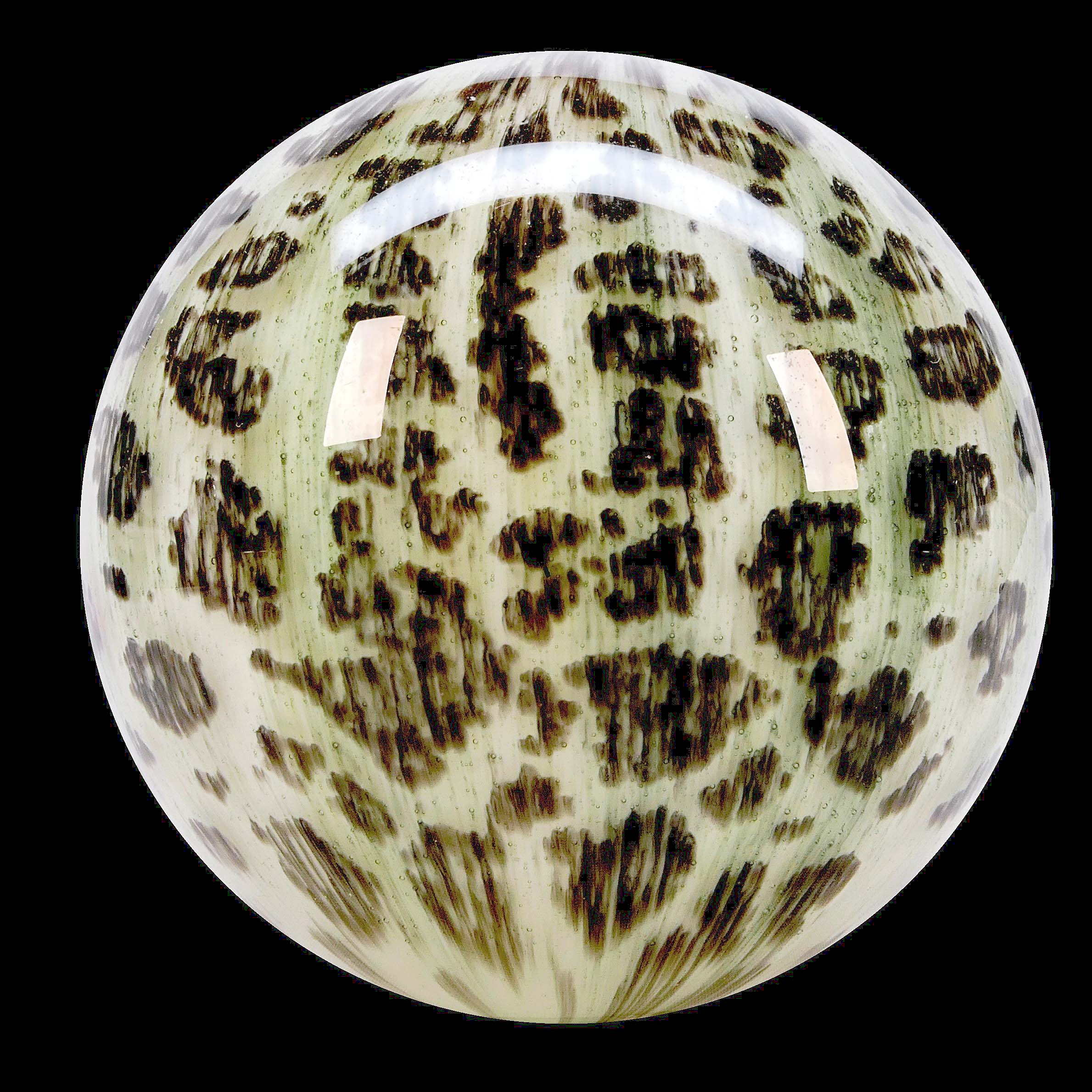
Contemporary handmade Snow Leopard, “Animal Sphere” series by Mark Matthews, 2-5/8 inches, mint (9.9), signed “Matthews 1999,” sold for $1,715.
Matthews began his quest to make accurate animal skin spheres in the early 1990s, using Bengal tiger and leopard pelts owned by a friend. The initial development of the first two spheres took years from idea to fruition. Matthews acquired new animal skin research material in 1997 when he was allowed access to the Smithsonian Museum of Natural History to photograph pelts and later obtained photographs from The Museum of Comparative Zoology at Harvard University. Selected photographic images were replicated into black and white patterns and transferred to a masking which was applied to a previously constructed, cylindrical, multi-layered glass blank and then sandblasted.
The coloring of the various layers replicates the color of the actual pelt. The masking retains the outer color and allows the sand to cut into the glass to reveal the layer of the colors beneath the surface. The cameo-like blank is then reheated and encased in clear glass before it is formed into a sphere. This technique was derived from a process called graal, developed by Simon Gate in 1919 at the Orrefors Glasshouse in Sweden.
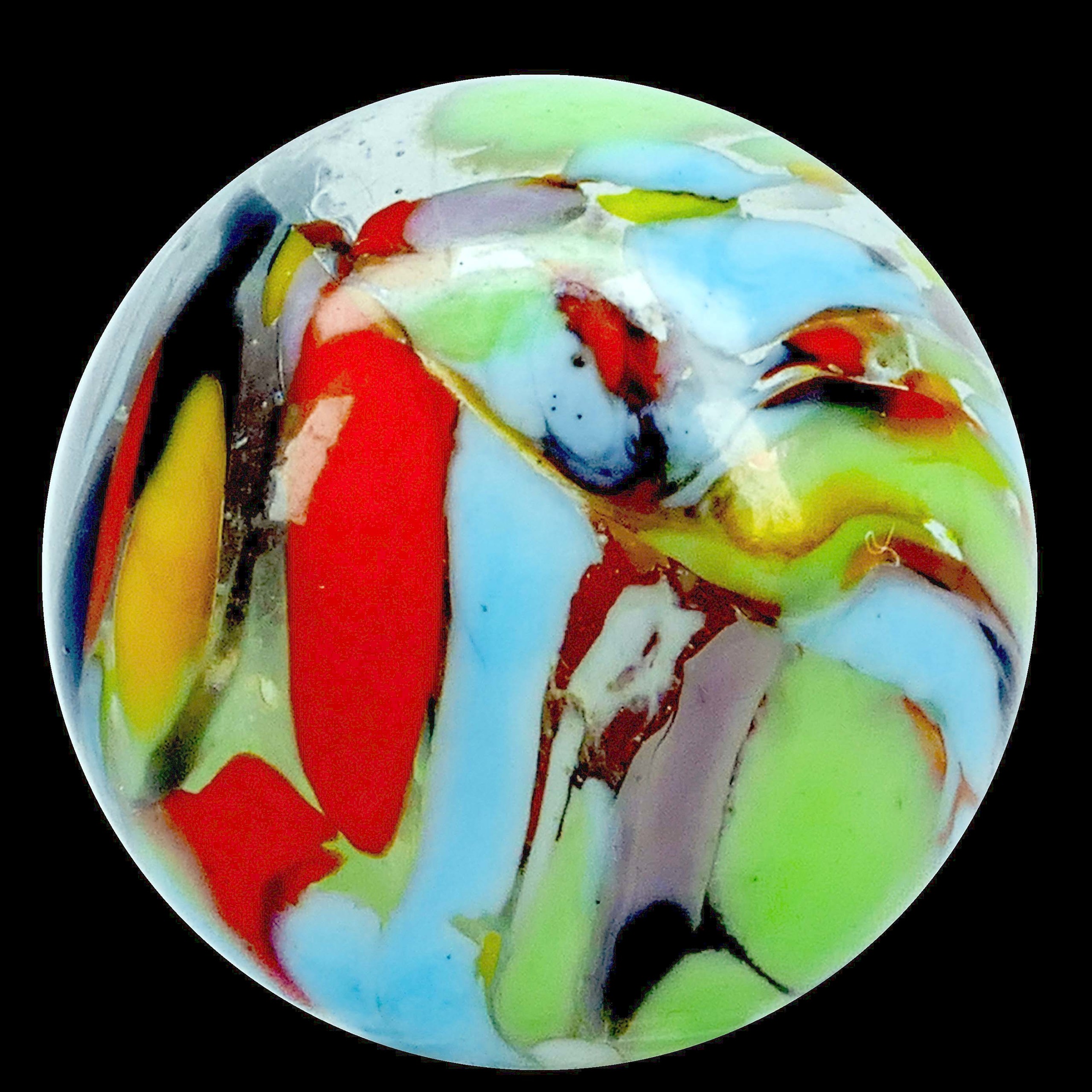
Christensen Agate Company, Guinea. Cambridge, Ohio, circa 1925-30, 21/32 inches, mint (9.9) realized $1,715.
For individual machine-made marbles, those by the Christensen Agate Company continue to lead in value. A 21/32-inch diameter Guinea marble produced by the Christensen Agate Company in Cambridge, Ohio, 1925-30, was knocked down at $1,715 against an estimate of $5001,000. Twelve of the top 20 highest priced lots in the auction were achieved by a Christensen Agate Company marble.
Block’s runs marble auctions every month, closing on the third Saturday of each month. Prices quoted include the buyer’s premium as reported by the auction house. For information, www.marbleauctions.com or 203-209-7076.




